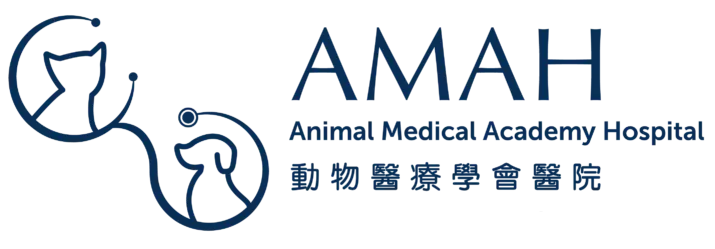
Specialty Care
Surgery
At our specialist veterinary surgery service, we are dedicated to providing comprehensive and personalized care for your pet. Our approach includes pre-operative patient management, thorough investigation of treatment options, and post-operative care, ensuring the best possible outcomes. We take pride in offering unbiased recommendations based on the latest scientific evidence, ensuring your pet receives the most effective treatment. Utilizing state-of-the-art technology and the most up-to-date surgical techniques, we provide cutting-edge care for every patient. In collaboration with anaesthesia specialists, we ensure the safest anaesthesia and optimize peri-operative pain and life management. Should the need arise, we also offer blood transfusion services to support critical cases. Our dedicated team of nurses and vets is available 24/7, providing round-the-clock monitoring and care to support your pet’s recovery at every stage.
Our Surgery Team performs a wide range of specialized soft tissue surgical procedures for dogs and cats, utilizing advanced instrumentation to ensure optimal outcomes. We are equipped with cutting-edge tools, including GIA and TA staplers, hemoclips, and the Force Triad Ligasure system, all designed to achieve precise hemostasis and enhance surgical efficiency.
Among the specialized procedures we offer are:
- Gastro-Intestinal and abdominal Surgery including the liver and the spleen
- Cardiovascular Surgery (If your patient is too small or is not a good candidate for a minimally-invasive catheter approach performed by our cardiologists)
- Kidney, Ureter and Bladder Surgery (SUB procedures, hydraulic sphincters, urethrostomy, etc…)
- Oncologic (Cancer) Surgery
- Thoracic Surgery (lung lobe torsion, pneumothorax, chylothorax, pulmonary tumour etc…)
- Reconstructive Skin and Wound Surgery
- Ear surgery (total ear canal ablation, ventral bulla osteotomy etc…)
- Upper Airway surgery (Brachycephalic obstructive airway syndrome surgery, laryngeal paralysis, achalasia etc…
- Mandibular-maxillar surgery (tumor requiring partial or total mandibulectomy / maxillectomy
We are equipped to manage most types of fractures, whether intra-articular or otherwise, in pets of all sizes—from miniature dogs and cats to giant breed dogs. Our facility is fully stocked with the We Ware equipped to manage most types of fractures, whether intra-articular or otherwise, in pets of all sizes—from miniature dogs and cats to giant breed dogs. Our facility is fully stocked with the necessary instrumentation to address fractures of any complexity, from toes to femurs. We use top-quality implants from leading brands such as Synthes, Kyon, IMEX, Arthrex, and BioMedtrix. Whenever possible, we prioritize minimally invasive techniques, utilizing intra-operative fluoroscopy to guide the placement of plates, interlocking nails, or pins through smaller incisions, enhancing recovery and reducing surgical trauma.
- Cruciate ligament disease: TPLO (Tibial Plateau Levelling Osteotomy) is one of the most advanced and best techniques to address cranial cruciate ligament rupture in dogs and cats. Better outcomes have been achieved using TPLO in dogs when compared with the lateral suture technique. We are pleased to be able to offer that technique to dogs or cats of any size, from 2kg to 100kg
- Patella luxation: This disease is often associated with some degree of angular limb deformity and often requires a combination of different surgeries. The more complex cases may require a CT scan and advanced procedures such as angular limb deformity correction or patellar groove replacement. We are glad to be able to provide all the treatment options.
- Stifle arthroscopy: Dogs with cranial cruciate ligament rupture often present with meniscal lesions. Diagnosis of a meniscal lesion requires looking into the joint. It can be performed via a mini arthrotomy (opening the joint) or arthroscopy. Arthroscopy is a keyhole procedure that limits the approach to a few millimetres.
- Stifle OCD
- Patellar ligament rupture
- Patella fracture
- Deranged stifle (multiple ligament injury)
- Hip dysplasia/osteoarthritis: Hip dysplasia, Legg Perthes Calve disease, and slipped capital femoral fracture are the most common causes of osteoarthritis in dogs and cats. Different surgical options are available depending on your animal’s age and if it can be treated with medication. For end-stage osteoarthritis, some salvation procedures such as femoral head and neck excision or total hip replacement may be needed
- Hip luxationAcute luxations (dislocation) are reduced under general anaesthesia. After the hip has been placed back, treatment can consist of immobilisation via a sling for a few weeks. Alternatively, surgery (toggle pin, iliofemoral suture, transarticular pin…) is recommended if the joint is still unstable after reduction. When luxation is associated with another underlying condition (hip dysplasia) a salvation procedure such as TOTAL HIP REPLACEMENT.
- Elbow dysplasia: It is one of the most common causes of elbow osteoarthritis. Diagnosis often requires a CT scan. If treatment is rarely curative, it can significantly improve your animal lameness. Arthroscopy (keyhole procedure) is the preferred option to treat this condition.
- Transcondylar fissure: This is a condition that could develop in the humeral bone and must be treated urgently to avoid a fracture. This condition is usually treated via a minimally invasive approach (a 2cm skin incision) using a screw placed via fluoroscopy
- Elbow incongruity
- Shoulder OCD: Shoulder OCD is a disease that could occur during your animal’s growth. A flap of bone and cartilage is detached and causes some pain. Treatment consists of an excision of this flap and curettage of the bone. We perform that procedure via Arthroscopy (keyhole) procedure
- Shoulder instability
- Shoulder dysplasia
- Instability of the tarsus: Depending on the ligament(s) affected, our first attempt is to repair the ligament(s) to restore a full joint function. Sometimes it is not achievable and it is better to partially (partial tarsal arthrodesis) or completely fuse the joint (pantarsal arthrodesis). All those techniques are usually associated with a good outcome
- OCD lesion
- Instability of the carpus: Depending on the ligament(s) affected, our first attempt is to repair the ligament(s) to restore a full joint function. Sometimes it is not achievable and it is better to partially (partial carpal arthrodesis) or completely fuse the joint (pancarpal arthrodesis). All those techniques are usually associated with a good outcome.
- Achilles tendon/patella tendon rupture
- Biceps tendinitis
- Ligament injury
This condition often requires advanced imaging and surgical planning to restore a normal bone shape. More complex cases will benefit from 3D-printed bone templates, guides or implants. The sooner we fix the limb deformity, the lesser the chance of joint damage.
At AMAH, we are proud to offer Total Hip Replacement for dogs and cats, a procedure that mirrors the effectiveness of hip replacements in human medicine. Recognized as the gold standard treatment for end-stage osteoarthritis and various hip developmental diseases, total hip replacement provides pets with a new lease on life by restoring mobility and significantly reducing pain. This advanced procedure requires a high level of expertise, far beyond standard specialist training, necessitating specific certification and experience to minimize the risk of complications. At AMAH, we are fortunate to have a highly experienced surgeon specializing in total hip replacements, ensuring the best possible outcomes for your pet.
To help you better understand this advanced procedure, we have prepared a comprehensive list of questions and answers below. This section provides both simplified and in-depth information, along with documentation about total hip replacement, to address all your concerns and equip you with the knowledge you need to make informed decisions about your pet’s care.
Here are common questions and answers:
When a patient becomes acutely non-ambulatory and likely requires surgery, but cannot be seen urgently by our neurology service, we are pleased to offer an alternative through our surgical service. Our experienced surgical team is also well-versed in neurosurgery, providing your pet with timely and expert care when urgent intervention is needed.
- Hemilaminectomy
- Laminectomy
- Ventral slot
- Spinal fracture
We are proud to offer arthroscopy as part of our advanced orthopaedic services when indicated for our patients. Arthroscopy is a minimally invasive, keyhole surgical technique that allows us to diagnose and treat joint issues with precision and minimal disruption. By using small incisions and specialized instruments, arthroscopy significantly reduces tissue damage, resulting in quicker recovery times, less post-operative pain, and a faster return to normal activities for your pet. This cutting-edge approach ensures that we can provide the most effective care while minimizing the impact of surgery. Our small arthroscopes diameters, from 1.9 to 2.4 mm allow us to perform surgery on the following joint:
- Elbow
- Shoulder
- Stifle
- Hip
- Tarsus / carpus (large breed dogs)

 3899 8999
3899 8999








